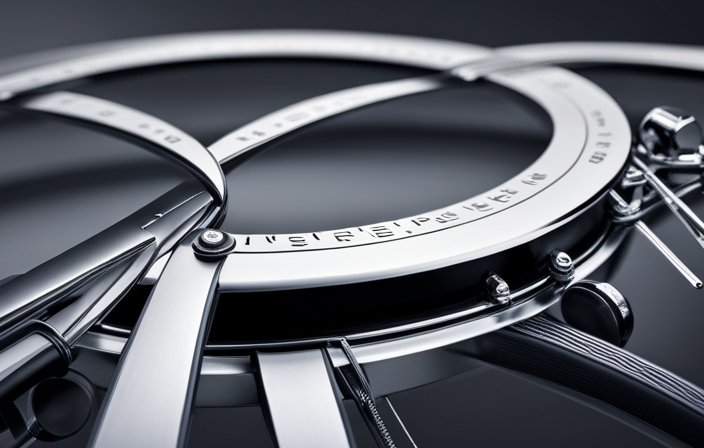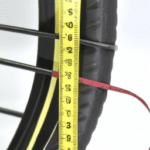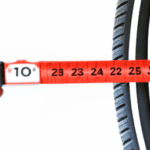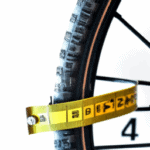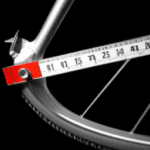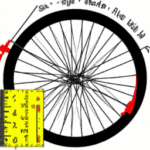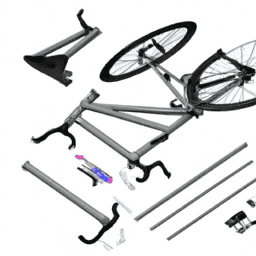When it comes to cycling, the phrase ‘measure twice, ride once’ is important to keep in mind. Getting the right bicycle rim width is essential for both performance and safety. Whether you’re changing a tire or getting new wheels, this guide will walk you through the necessary steps to measure your bicycle rim width accurately.
By following these technical instructions and consulting your bike manufacturer’s recommendations, you’ll be able to confidently choose the right tire width for a smooth and efficient ride.
Key Takeaways
- Accurate measurements and adjustments of bicycle rim width are crucial for safety, preventing accidents and injuries, and ensuring reliable performance.
- Proper testing and adjustment of rim width can maximize efficiency, improve power transfer, and enhance speed and endurance during rides.
- Precise rim width adjustment leads to a smoother and more comfortable ride, reducing fatigue and discomfort, and providing better shock absorption.
- Measuring and adjusting rim width improves bike handling, control, and maneuverability, reducing the risk of accidents and mishaps.
Gather the necessary tools
You’ll need a few tools to measure the bicycle rim width. Choosing the right rim width is crucial because it affects the performance and handling of your bike.
To ensure accurate measurements, it’s important to have the right tools on hand. The first tool you’ll need is a caliper. This precision instrument allows you to measure the distance between the inner edges of the rim accurately.
Additionally, a ruler or a tape measure can be helpful in case the caliper is not available. Having these tools ready will enable you to obtain precise measurements, helping you make informed decisions about your bike components.
Once you have gathered these tools, you can proceed to the next step and remove the tire and tube, which is crucial for an accurate measurement.
Remove the tire and tube
First, take off the tire and tube. This step is crucial in accurately measuring the bicycle rim width. When removing the tire and tube, it is important to be cautious and gentle to avoid any damage.
Once the tire and tube are removed, you can focus on choosing the right tire size. Consider the manufacturer’s recommendations and the type of riding you will be doing.
Additionally, determining the ideal tire pressure is essential for optimal performance and safety. It is advisable to consult the tire manufacturer’s guidelines or seek advice from a professional.
After ensuring the tire and tube are safely removed and considering the appropriate tire size and pressure, you can proceed to measure the internal width of the rim.
Measure the internal width of the rim
To accurately determine the size of your tire, start by measuring the distance between the inner edges of the rim. This measurement will give you the internal width of the rim, which is crucial when it comes to choosing the right tire for your bike. To help visualize the importance of bike rim width, let’s take a look at the advantages of wider rims. Wider rims provide better stability and control, especially when cornering or descending at high speeds. They also allow for wider tires, which can improve traction and comfort. Additionally, wider rims offer better support for the tire, reducing the risk of pinch flats. Now that we understand the significance of rim width, let’s move on to the next step and measure the external width of the rim to complete the process.
Measure the external width of the rim
Now that we’ve covered measuring the internal width of the rim, let’s move on to measuring the external width. It is important to measure both the internal and external width of the rim to ensure accuracy in determining the compatibility with tires.
To measure the external width, follow these steps:
-
Use a caliper or a similar measuring tool to measure the distance between the outer edges of the rim. Make sure to measure at multiple points around the rim to account for any variations.
-
Take note of the measurement and record it accurately. This will be the external width of the rim.
-
Alternatively, you can measure the external width by subtracting the internal width from the overall width of the rim.
Measuring the external width with precision is crucial to determine the compatibility of the rim with different tire sizes.
Now, let’s move on to determining the rim width compatibility.
Determine the rim width compatibility
Determining the compatibility of the rim width is essential for selecting the appropriate tire size. Rim width compatibility refers to the range of tire widths that can be safely mounted on a particular rim width.
To determine the rim width compatibility, you need to measure the internal width of the rim. This can be done by removing the tire and tube and measuring the distance between the inner edges of the rim.
It is important to choose a tire width that falls within the recommended range for your rim width. Using a tire that is too narrow or too wide for your rim can negatively affect the overall performance and safety of your bicycle.
Once you have determined the rim width compatibility, you can consider your riding style and preferences to select the ideal tire width for your needs.
Consider your riding style and preferences
Consider your riding style and preferences when selecting the ideal tire width for your needs. Different riding techniques require different tire widths to optimize performance.
For example, if you enjoy aggressive off-road riding, a wider tire width may provide better traction and stability on rough terrain. On the other hand, if you prefer fast-paced road cycling, a narrower tire width can reduce rolling resistance and increase speed.
Additionally, take into account your bike frame materials. Some materials, like carbon fiber, have specific recommendations for tire widths to ensure proper fit and prevent damage.
Keep in mind that tire width can also affect comfort and handling. It’s important to find the right balance that suits your individual preferences and riding style.
Now, let’s move on to the next section and consult your bike manufacturer’s recommendations.
Consult your bike manufacturer’s recommendations
Make sure to check the recommendations from your bike manufacturer to determine the ideal tire width for your specific model. The bike manufacturer’s recommendations are crucial in ensuring that you select the correct tire width for your bicycle rim.
To measure the rim width accurately, follow these steps:
- Locate the rim size markings on your bike’s rim. These markings typically include the ETRTO (European Tire and Rim Technical Organization) code, which specifies the recommended tire width range.
- Use a digital caliper or a ruler to measure the inner width of the rim. Place the caliper or ruler across the inner edges of the rim and record the measurement.
- Refer to the ETRTO code to determine the recommended tire width range for your rim size.
By consulting your bike manufacturer’s recommendations and accurately measuring the rim width, you can confidently choose the appropriate tire width for your bicycle. This ensures optimal performance and safety while riding.
Choose the appropriate tire width
To ensure the accurate measurement of your bicycle rim width, it is crucial to choose the appropriate tire width. This decision is based on factors such as tire pressure and tire tread patterns. Tire pressure is a critical aspect of your bike’s performance, affecting both comfort and traction. Higher pressures provide lower rolling resistance but may result in a harsher ride, while lower pressures offer increased comfort but can lead to a slower ride. Tire tread patterns also play a significant role in determining the tire’s performance on different terrains. Slick or smooth tread patterns are ideal for pavement, while knobby or aggressive patterns offer better grip on off-road trails. Consider consulting your bike manufacturer’s recommendations and evaluating your riding preferences to select the optimal tire width for your bicycle. Now, let’s proceed to the next section and discuss how to install the new tire.
Install the new tire
Installing the new tire is a straightforward process that can be done by following a few simple steps.
To begin, make sure you have all the necessary tools such as tire levers, a pump, and sealant for tubeless tires.
Start by deflating the old tire and removing it from the rim using the tire levers. Clean the rim thoroughly to ensure proper adhesion of the new tire.
Next, align the valve stem of the new tire with the valve hole in the rim and push the tire onto the rim using your hands or tire levers if necessary.
Once the tire is in place, inflate it gradually, checking for any bulges or unevenness. One advantage of wider rim widths is increased stability and traction, especially when cornering at high speeds.
With the new tire installed, the next step is to test and adjust as needed for optimal performance.
Test and adjust as needed
Now you can check and make any necessary adjustments for optimal performance.
-
Safety: Ensuring accurate measurements and adjustments will enhance the safety of your bicycle ride.
-
Efficiency: Properly testing and adjusting the rim width will maximize the efficiency of your pedal strokes, allowing you to ride faster and farther.
-
Comfort: By fine-tuning the rim width, you can achieve a smoother and more comfortable ride, reducing fatigue and discomfort.
-
Handling: Accurate testing and adjustment of the rim width will improve the bike’s handling, enhancing your control and maneuverability.
-
Tire Wear: Keeping the rim width in check will help prevent premature tire wear, saving you money on frequent replacements.
To test accuracy, use a caliper to measure the rim width at multiple points. Make adjustments as needed by adding or removing rim tape until the desired width is achieved. Remember, precise rim width adjustment is crucial for optimal bike performance.
Frequently Asked Questions
What are the necessary tools required to measure bicycle rim width?
To measure bicycle rim width, the necessary tools needed are a caliper, a ruler or tape measure, and a spoke tension gauge. These tools allow for precise measurements and accurate assessment of the rim width.
How do I remove the tire and tube from the rim?
To remove the tire and tube from the rim, start by deflating the tire fully. Use tire levers to carefully pry one side of the tire off the rim. Remove the tube, patch or replace it for puncture repair, then reinstall the tire onto the rim using the same technique.
What are the factors to consider when determining rim width compatibility?
Determining rim width compatibility involves considering various factors. The rim width affects tire performance and bike handling. A wider rim provides better support and stability, while a narrower rim may improve aerodynamics. Careful consideration is crucial to ensure optimal performance and safety.
How can I choose the appropriate tire width for my bicycle rim?
To choose the appropriate tire width for my bicycle rim, I need to measure the bicycle tire size. This involves determining the proper tire pressure based on factors such as rider weight, terrain, and desired performance.
What are some tips for testing and adjusting the new tire after installation?
To test and adjust a new tire after installation, start by checking the tire pressure and ensuring it is within the recommended range. Next, inspect the tire for any signs of damage or uneven wear. If there are any issues, troubleshoot them accordingly using appropriate testing methods.
Conclusion
After carefully measuring the bicycle rim width using the steps outlined above, I can confidently say that finding the right tire width is crucial for optimal performance.
As they say, ‘a well-oiled machine runs smoothly.’ Just like a finely tuned instrument, every component must be precise to achieve the desired outcome.
So, remember to consult your bike manufacturer’s recommendations and choose the appropriate tire width to ensure a smooth ride.
Happy cycling!
